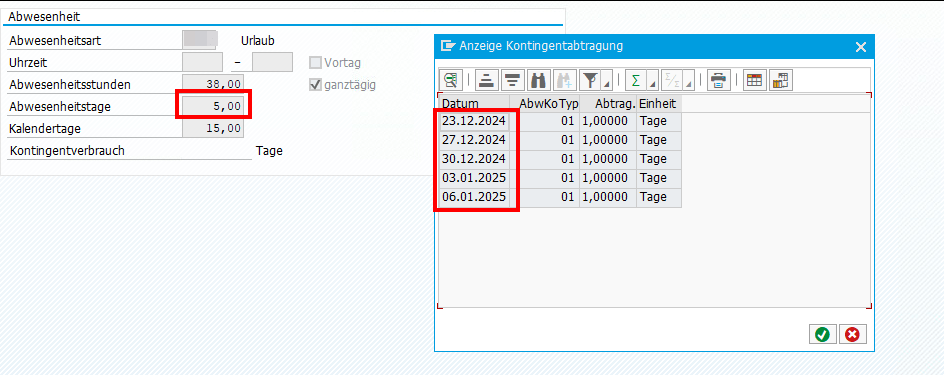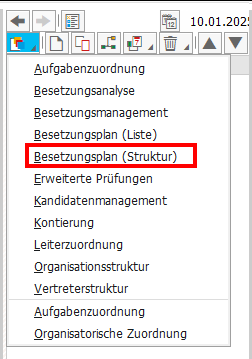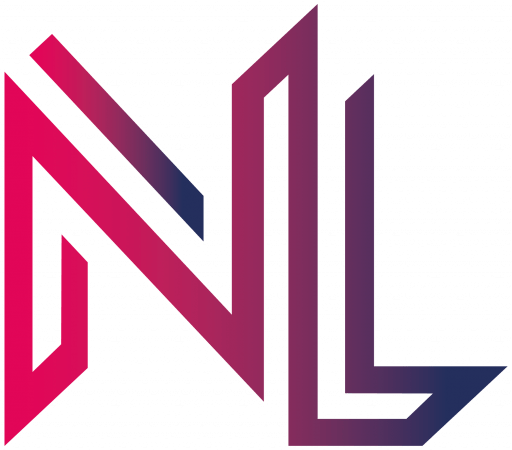DATA(path) = escape( val = 'https://url.com/path/with/a space/in/it'
format = cl_abap_format=>e_url ).
Tag: SAP
[ABAP] Get Filename and Mimetype from uploaded file
DATA data_tab TYPE solix_tab.
DATA filename TYPE string.
DATA path TYPE string DEFAULT 'C:\Users\path\to\my\file.pdf'.
cl_gui_frontend_services=>gui_upload( EXPORTING filename = path )
filetype = 'BIN'
CHANGING data_tab = data_tab ).
CALL FUNCTION 'SO_SPLIT_FILE_AND_PATH'
EXPORTING
full_name = path
IMPORTING
stripped_name = filename
EXCEPTIONS
x_error = 1
OTHERS = 2.
DATA(file_extension) = /iwwrk/cl_mgw_workflow_rt_util=>get_extention_from_file_name( filename ).
DATA(mimetype) = /iwwrk/cl_mgw_workflow_rt_util=>get_mime_type_from_extension( file_extension ).
Instead of SO_SPLIT_FILE_AND_PATH you can also use PC_SPLIT_COMPLETE_FILENAME.
[ABAP] Validate date
CALL FUNCTION 'DATE_CHECK_PLAUSIBILITY'
EXPORTING
date = '20250231' " invalid date
EXCEPTIONS
plausibility_check_failed = 1
OTHERS = 2.
IF sy-subrc <> 0.
MESSAGE ID sy-msgid TYPE sy-msgty NUMBER sy-msgno WITH sy-msgv1 sy-msgv2 sy-msgv3 sy-msgv4.
ENDIF.
If you’re not interested in a specific error message, you can also use the following method to get the result as boolean.
DATA(date_is_valid) = cl_rs_time_service=>is_valid_date( '20250231' ).
[ABAP] Validate pernr
DATA ls_return TYPE bapireturn.
CALL FUNCTION 'BAPI_EMPLOYEE_CHECKEXISTENCE'
EXPORTING
number = 99999999
IMPORTING
return = ls_return.
IF ls_return-type = 'E'.
MESSAGE ls_return-message TYPE ls_return-type.
ENDIF.
On newer systems there is also class CL_HRPA_MAINTAIN_EMPLOYEE with method PERSONNEL_NUMBER_EXISTS.
Or class CL_HRPA_MAINTAIN_EMPLOYEE_UTIL and method EXIST_EMPLOYEE.
[ABAP] BASE CORRESPONDING
I recently had to rewrite a Report where I saw code that looked similar to this.
TYPES:
BEGIN OF ty_employee,
vorna TYPE vorna,
nachn TYPE nachn,
END OF ty_employee,
tt_employee TYPE TABLE OF ty_employee WITH DEFAULT KEY,
BEGIN OF ty_source,
col1 TYPE c LENGTH 2,
col2 TYPE c LENGTH 2,
col3 TYPE c LENGTH 2,
col4 TYPE c LENGTH 2,
END OF ty_source,
tt_source TYPE TABLE OF ty_source WITH DEFAULT KEY,
BEGIN OF ty_target,
col1 TYPE c LENGTH 2,
col2 TYPE c LENGTH 2,
col3 TYPE c LENGTH 2,
col4_vorna TYPE vorna,
col5_nachn TYPE nachn,
END OF ty_target,
tt_target TYPE TABLE OF ty_target WITH DEFAULT KEY.
* Test employees
DATA(employees) = VALUE tt_employee( ( vorna = 'Max' nachn = 'Mustermann' )
( vorna = 'Erika' nachn = 'Mustermann' ) ).
* In reallity, this table changed per employee
DATA(source_tab) = VALUE tt_source( ( col1 = 'a1' col2 = 'b1' col3 = 'c1' col4 = 'd1' )
( col1 = 'a2' col2 = 'b2' col3 = 'c2' col4 = 'd2' )
( col1 = 'a3' col2 = 'b3' col3 = 'c3' col4 = 'd3' ) ).
* Actual logic
DATA target_line TYPE ty_target.
DATA target_tab1 TYPE tt_target.
LOOP AT employees INTO DATA(employee).
LOOP AT source_tab INTO DATA(source_line).
CLEAR target_line.
target_line-col4_vorna = employee-vorna.
target_line-col5_nachn = employee-nachn.
MOVE-CORRESPONDING source_line TO target_line.
APPEND target_line TO target_tab1.
ENDLOOP.
ENDLOOP.
cl_demo_output=>write( employees ).
cl_demo_output=>write( source_tab ).
cl_demo_output=>write( target_tab1 ).
cl_demo_output=>display( ).
I spend some time thinking, how I could improve the actual logic by using some “new” ABAP syntax elements. I came up with the following result.
DATA target_tab2 TYPE tt_target.
LOOP AT employees INTO employee.
target_tab2 = VALUE #( BASE CORRESPONDING #( target_tab2 )
FOR line IN source_tab (
VALUE #( BASE CORRESPONDING #( line )
col4_vorna = employee-vorna
col5_nachn = employee-nachn ) ) ).
ENDLOOP.
But I must say, that in this case I prefer using nested LOOP’s like this
DATA target_tab3 TYPE tt_target.
LOOP AT employees INTO employee.
LOOP AT source_tab INTO source_line.
DATA(t_line) = CORRESPONDING ty_target( source_line ).
t_line-col4_vorna = employee-vorna.
t_line-col5_nachn = employee-nachn.
APPEND t_line TO target_tab3.
ENDLOOP.
ENDLOOP.
or this
DATA target_tab4 TYPE tt_target.
LOOP AT employees INTO employee.
LOOP AT source_tab INTO source_line.
APPEND VALUE #( BASE CORRESPONDING #( source_line )
col4_vorna = employee-vorna
col5_nachn = employee-nachn ) TO target_tab4.
ENDLOOP.
ENDLOOP.
[ABAP] E-Mail-Templates in S/4HANA
Recently I had to create a mail process where I used the first time the “new” E-Mail-Templates. The following Blogs helped me do this:
https://weberpatrick.de/e-mail-templates/
https://weberpatrick.de/e-mail-templates-einfaches-beispiel/
https://weberpatrick.de/e-mail-template-daten-per-code-statt-cds/
https://community.sap.com/t5/enterprise-resource-planning-blogs-by-members/e-mail-templates-in-s-4-hana/ba-p/13397719
https://community.sap.com/t5/enterprise-resource-planning-blogs-by-members/e-mail-templates-in-s-4-hana-translations/ba-p/13440792
https://community.sap.com/t5/enterprise-resource-planning-blogs-by-members/e-mail-templates-in-s-4-hana-display-table-in-email-template/ba-p/13546304
https://www.solviads.com/e-mail-template-in-sap-s-4-hana
In my case it was not possible to fetch the data via CDS View, I therefore had to manually fill the variables. Following a simplified version of my code.
You must create a CDS View, as this is the structure in which the variables defined in the mail text are mapped to, even if you do this manually.
define view entity ZMAIL_MY_TEMPLATE as select from pa0001 {
key pa0001.pernr,
pa0001.ename,
cast ( '' as abap.char( 20 ) ) as custom_field // this way you can add a field, that does not exist in the selected table
}
This is just one way, how you can manually fill the variables. Other ways are possible using the class cl_smtg_email_api. I choose the method render_w_data because it returned the mail text, and you manually can do additional changes to the mail text, like adding HTML-Table content, which otherwise gets “escaped” when filled via a replacement variable.
" dynamicaly build table for mail variables
DATA(lt_comp) = VALUE abap_component_tab( ( name = 'ename' type = CAST #( cl_abap_typedescr=>describe_by_name( 'EMNAM' ) ) )
( name = 'pernr' type = CAST #( cl_abap_typedescr=>describe_by_name( 'PERNR_D' ) ) ) ) .
" fill table with concrete data
DATA(lo_struct) = cl_abap_structdescr=>get( lt_comp ).
CREATE DATA mr_data TYPE HANDLE lo_struct.
ASSIGN mr_data->* TO FIELD-SYMBOL(<ls_data>).
<ls_data>-(1) = ename.
<ls_data>-(2) = pernr.
" create instance of eMail API, provide name of Mail template
DATA(lo_email_api) = cl_smtg_email_api=>get_instance( iv_template_id = 'ZMAIL_MY_TEMPLATE' ).
" render E-Mail for CL_BCS class. This replaces all placeholders with real data
lo_email_api->render_w_data( EXPORTING iv_language = sy-langu
ir_data = mr_data
IMPORTING ev_subject = DATA(subject)
ev_body_html = DATA(body_html) ).
TRY.
" create Sender & Receiver
DATA(lo_sender) = cl_cam_address_bcs=>create_internet_address( i_address_string = 'noreply@test.de'
i_address_name = 'Test' ).
DATA(lo_recipient) = cl_cam_address_bcs=>create_internet_address( i_address_string = 'receiver@test.de').
" create mail document
DATA(lo_mail_document) = cl_document_bcs=>create_document( i_type = 'HTM'
i_subject = CONV #( subject )
i_text = cl_bcs_convert=>string_to_soli( body_html ) ).
" create Business Communication Service
DATA(lo_bcs) = cl_bcs=>create_persistent( ).
lo_bcs->set_document( lo_mail_document ).
lo_bcs->set_sender( lo_sender ).
lo_bcs->add_recipient( lo_recipient ).
lo_bcs->send( ).
COMMIT WORK.
CATCH cx_smtg_email_common INTO DATA(ls_cx).
DATA(lv_message) = ls_cx->get_text( ).
MESSAGE s899(id) WITH 'Unable to send message:'(004) lv_message.
ENDTRY.
[HR] Abwesenheiten (IT2001) – Anzeige Kontingentabtragungen
Bei einer Abwesenheit wie z.B. Urlaub, die über eine Monatsgrenze oder über einige Feiertage hinweg geht, kann es hilfreich sein, die konkreten Abtragungen einzusehen, um zu verstehen, welche Tage in dem Zeitraum denn wirklich Urlaub waren.
Dazu einfach die Abwesenheit öffnen in der PA20 und auf Springen → Abtragungen (Shift+F8) gehen.


Man kann die Kontingentabtragung auch für das komplette Kontingent eines Jahres einsehen via IT2006.
Die zugehörige Datenbanktabelle ist PTQUODED. Um die Abträge für eine bestimmte Abwesenheitsart zu selektieren, muss noch ein JOIN auf die PA2001 über die DOCNR gemacht werden. Zumindest ist das der einzige Weg, den ich herausfinden konnte. 🙂
SELECT SUM( a~quode )
FROM ptquoded AS a
JOIN pa2001 AS b
ON a~pernr = b~pernr
AND a~docnr = b~docnr
INTO DATA(urlaubsabtrag)
WHERE a~pernr = pernr-pernr
AND a~datum BETWEEN pn-begda AND pn-endda
AND b~subty = 0100. " Abwesenheitsart, welche Selektiert werden soll
[ABAP] Get the last day of the previous month
I recently had to find the last day of the previous month. I found the Method get_last_day_prev_month of class cl_bs_period_toolset_basics doing the job. The actual logic is super simple:
rv_date = iv_date.
rv_date+6(2) = '01'.
rv_date = rv_date - 1.
That’s why I thought about whether I needed a separate method at all, or whether I could do it directly in a one-liner. My first idea was to use the LET operator in combination with CONV (Option 2). This works, but does not look very intuitive, and I noticed it can be done even simpler without using LET (Option 3). And if you already have a typed variable, you can do it even shorter with a single CONV (Option 4).
* Option 1
DATA(date_1) = cl_bs_period_toolset_basics=>get_last_day_prev_month( sy-datum ).
*Option 2
DATA(date_2) = CONV d( LET x = CONV d( sy-datum(6) && '01' ) IN x - 1 ).
*Option 3
DATA(date_3) = CONV d( CONV d( sy-datum(6) && '01' ) - 1 ).
* Option 4
DATA date_4 TYPE datum.
date_4 = CONV d( sy-datum(6) && '01' ) - 1.
cl_demo_output=>write_data( date_1 ).
cl_demo_output=>write_data( date_2 ).
cl_demo_output=>write_data( date_3 ).
cl_demo_output=>write_data( date_4 ).
cl_demo_output=>display( ).
All in all, I have to say that using the get_last_day_prev_month method is still the best solution as it is much more readable.
[HR] OM – Besetzungsplan (Struktur)
Da ich nur selten mit dem OM arbeite, vergessen ich immer wieder, wie man das OM “umdreht”, wenn man eine Person ausgewählt hat. Also die Anzeige von P – S – O umkehrt auf O – S – P.
Dabei ist es total einfach! Die Org. Einheit markieren und links oben in der Toolbar auf den Dropdown Button (Springen) gehen und Besetzungsplan (Struktur) auswählen und man erhält die gewünschte Ansicht.

